-
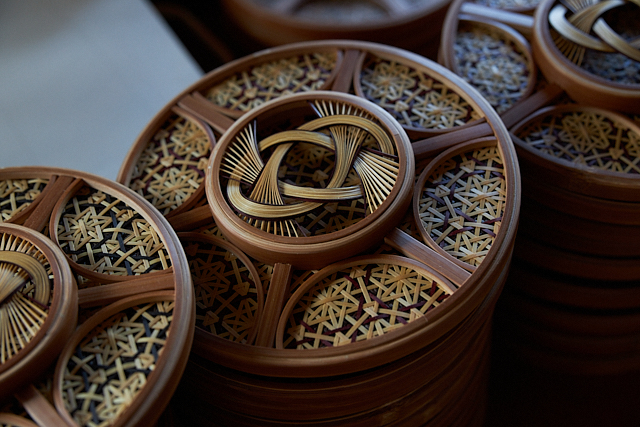
Suruga Bamboo Striped Craft: Miyabi Andon” creates works from delicate bamboo strips
-

Modern “Shino ware” is expressed in a graceful manner – Ms. Yuka Hayashi
-
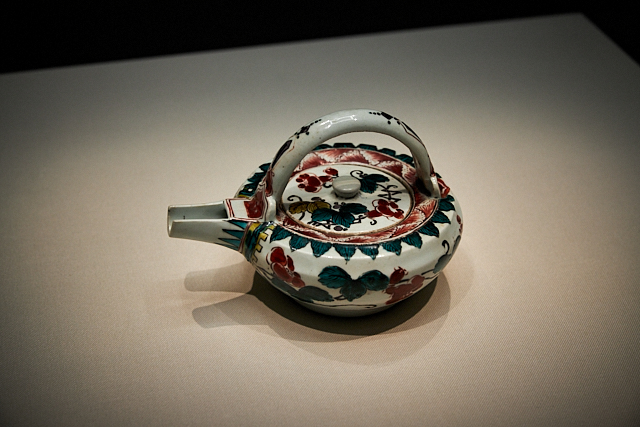
-
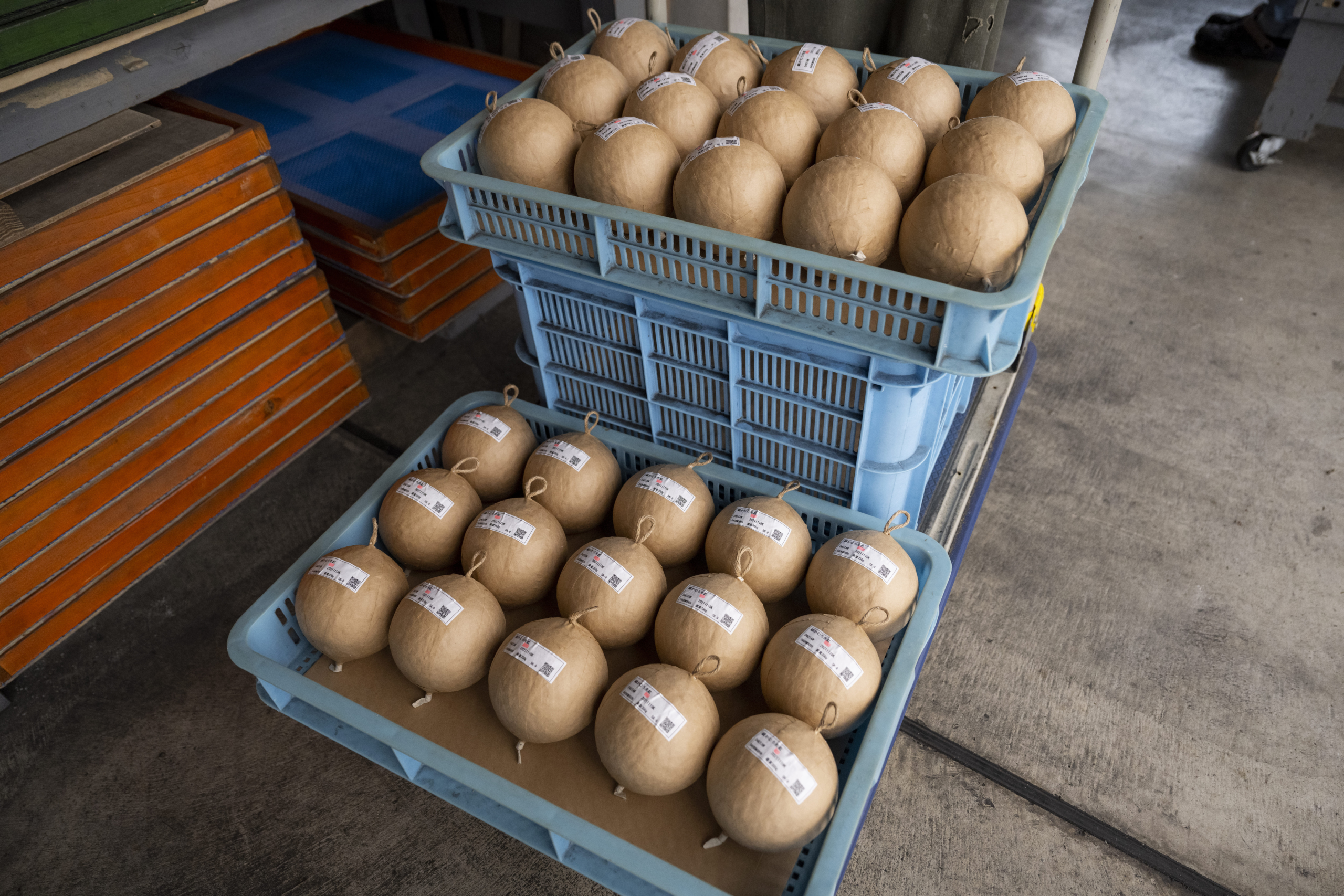
Kitanihon Hanabi Kogyo” to create entertainment in the night sky
-
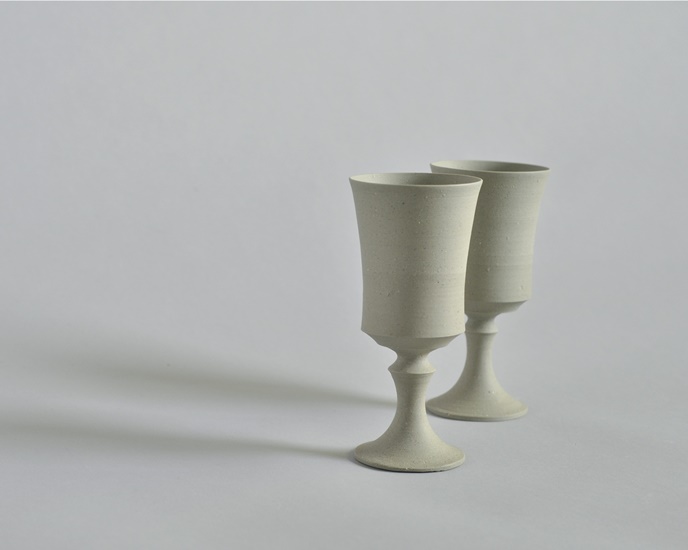
-
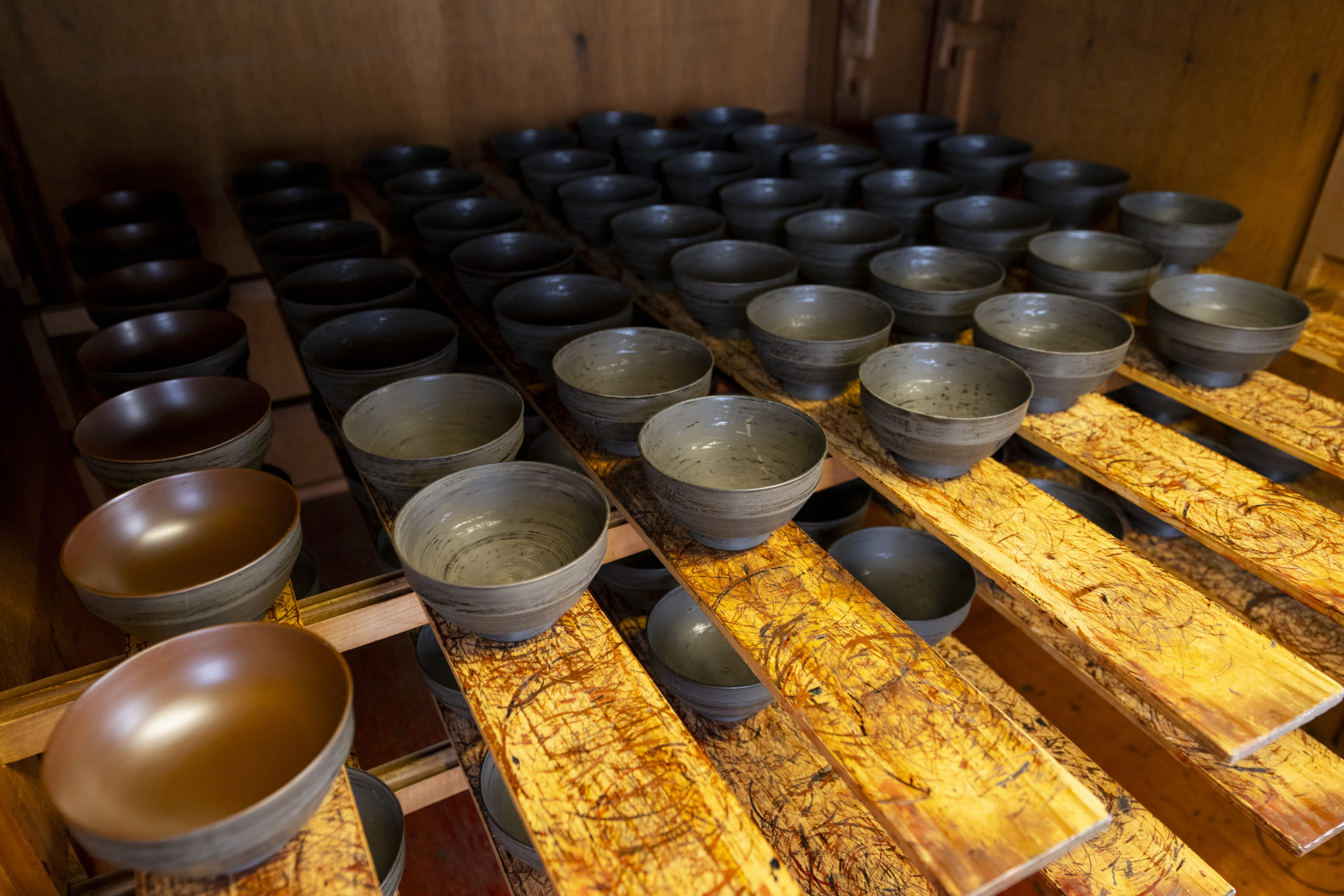
-
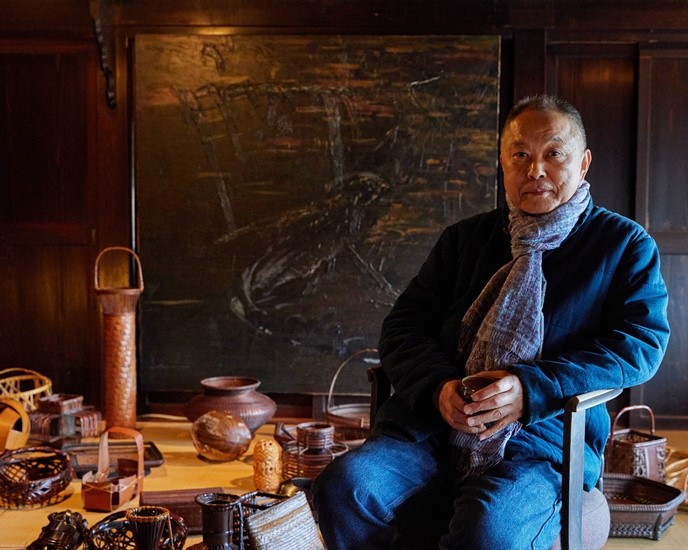
-
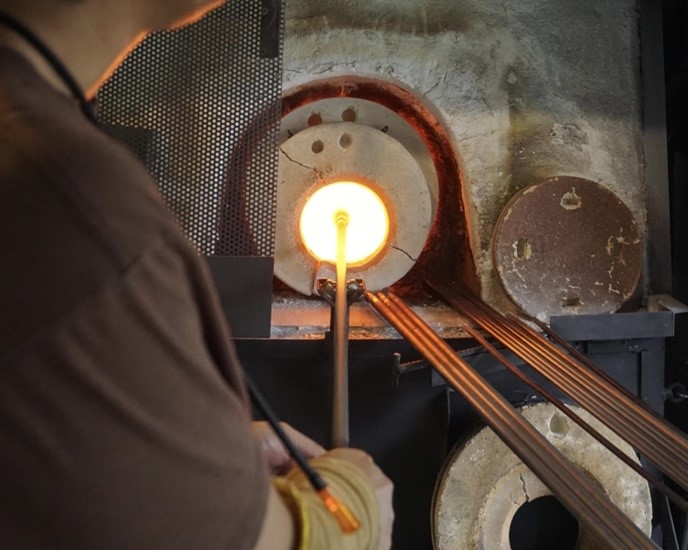
“Infusing Japanese culture and beautiful hues into glass.” – Glass artist Hiroki Hanaoka
-
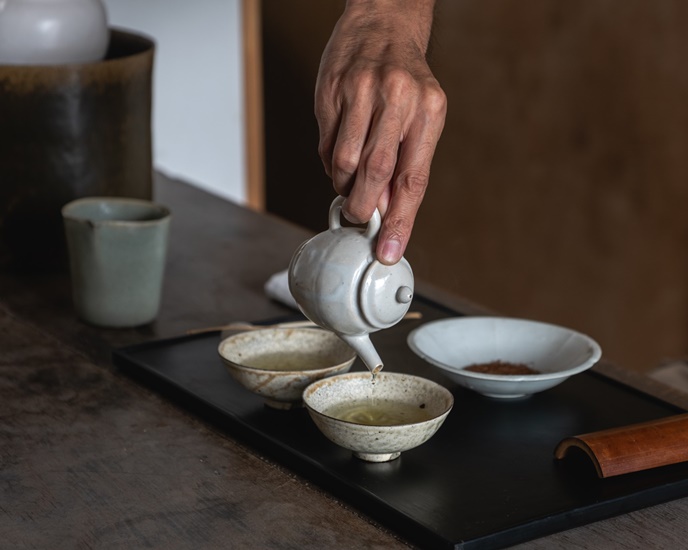
-
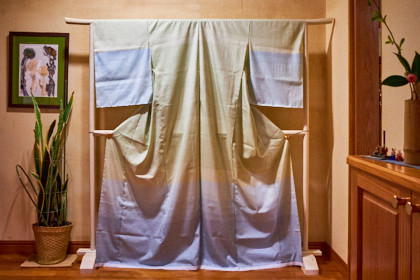
Artist who knows all about “Oshima Tsumugi” – Mr. Yukichi Masuda
-
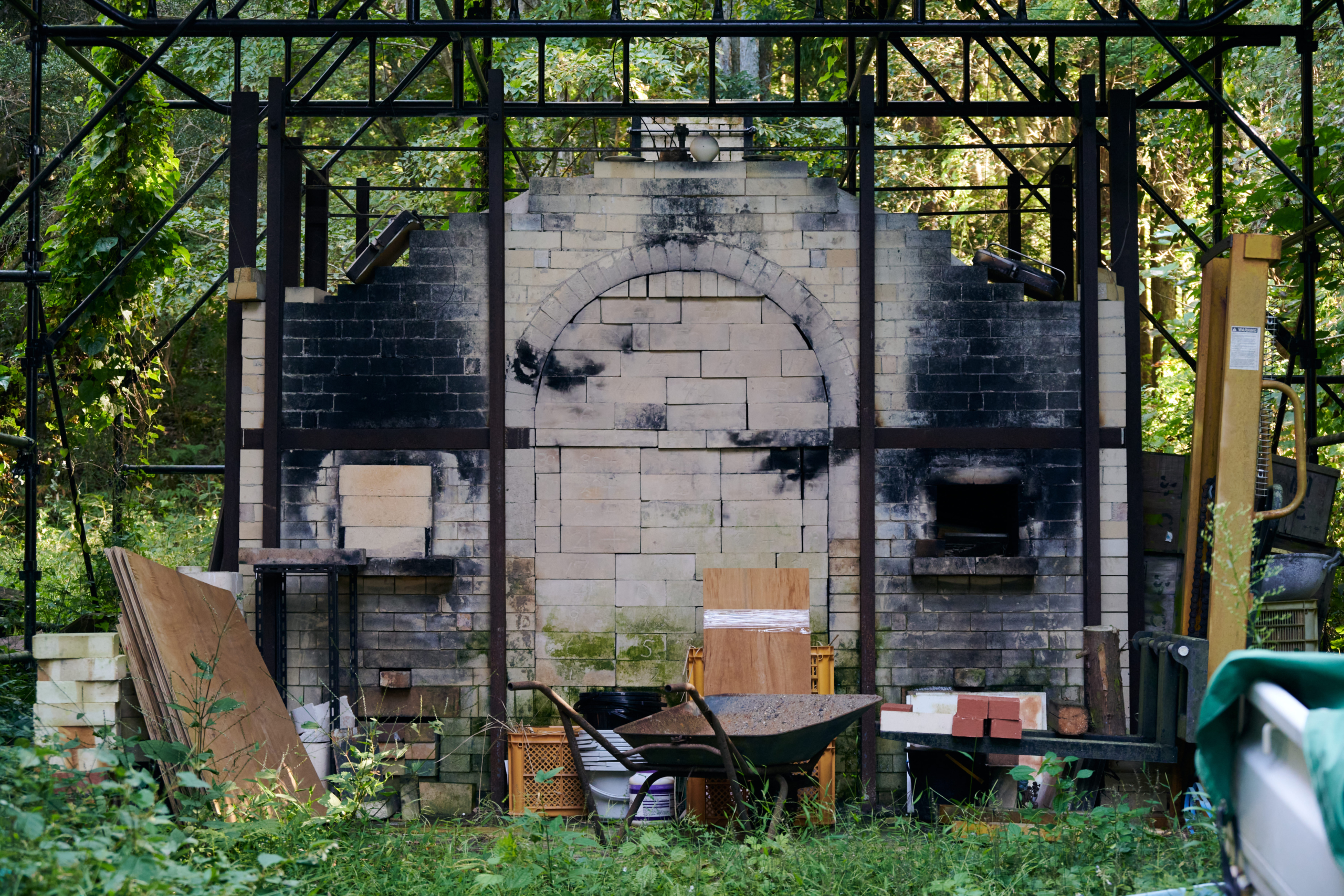
-
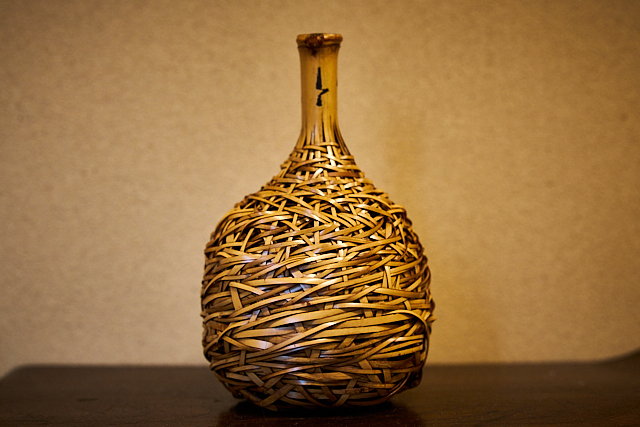
Suiko Takezeki of Suiya Bamboo Crafts, which creates practical works using traditional techniques
-
Sapporo Maruyama Zoo
- They breed typical Hokkaido animals such as Ussuri brown bear, Polar bear, Yezo deer and wolves.
- 3-1 Miyagaoka, Chuo-ku, Sapporo, Hokkaido
- URL http://www.city.sapporo.jp/zoo/
-
Hitsujigaoka Observation Hill
- Hitsujigaoka Observation Hill, though located in the large city of Sapporo, gives you a view of sheep herds grazing in the vast pastureland, and is a scenic spot overlooking the Ishikari Plain.
- 1 Hitsujigaoka, Toyohira-ku, Sapporo, Hokkaido
- URL http://www.hitsujigaoka.jp/
-
Historical Village of Hokkaido
- The Historical Village of Hokkaido relocated buildings showing the history of everyday life, industry, economy and culture during the pioneer era, while restoring and preserving the historical sites. It is an open-air museum where you can view the reproduction of the lifestyle at the time, giving you a history lesson of the pioneers in Hokkaido.
- 50-1 Atsubetsucho Konopporo, Atsubetsu-ku, Sapporo, Hokkaido
- URL http://www.kaitaku.or.jp/info/info.htm
-
Yama No Aquarium
- This is a freshwater fish aquarium located in Rubeshibecho, Kitami city in Hokkaido. Enjoy the water tank with ”waterfall”, the first in Japan; world’s first ”Aquarium of freezing river in the winter”; and large wild fish called Ito.
- 1-4 Rubeshibecho Matsuyama, Kitami, Hokkaido
- URL http://onneyu-aq.com/
-
Ryuhyo Misaki
- The best spot to view ice drifts. The best season is between February to March.
- Kawamukai Shokotsu-cho, Monbetsu
-
Shiretoko National Park, Oshinkoshin Fall
- It is also called ”Futami no Taki (Fall with two beauty)” since the river splits into two. The view is spectacular especially during the drift ice season when you can view the impressive white ocean which seems to spread out as far as the eye can see.
- Utoro Nishi, Shari-cho, Shari -gun, Hokkaido
- URL https://www.shiretoko.asia/oshinkoshin.html
-
Lake Mashu
- Located 11km from Teshikaga town and12km from Kawayu Hot Spring, the surface of the lake is 351 meters above sea level, about 20 km in circumference, covering 19.2 square km, and 211.4 meters in depth. It is a crater lake with the world’s top class transparency.
- Teshikaga-cho, Kawakami-gun, Hokkaido
-
Lake Kussharo
- A huge cobalt blue lake lying in Kussharo crater, the largest in Japan.
- Teshikaga, Kawakami-gun, Hokkaido
-
Kaminoko Pond
- It is a pond in the middle of the mountain containing underground water from Lake Mashu. The name ”Kaminoko (Child of God)” pond comes from the legend that Lake Mashu was called ”Kamuito” which means Lake of God.
- Kiyomizu, Kiyosato-cho, Shari-gun, Hokkaido
- URL http://www.kiyosatokankou.com/kaminokoike.html
-
Rikubetsu Space Earth Science Museum
- An observatory open to the public and equipped with Japan’s largest 115cm reflex telescope, four 30 cm binoculars, 15cm binoculars, and four consecutive solar telescopes.
- Rikubetsu-cho, Ashoro-gun, Hokkaido
- URL https://www.rikubetsu.jp/tenmon/
-
Lake Akan; Ainu Kotan
- Various Ainu classic dance and puppet shows called”Iomante fire festival” are performed at the Lake Akan Ainu Theater ”Ikor”. They also have Ainu-life Memorial Hall where you can learn about the lifestyle and culture of the Ainu people.
- 4-7-19 Akanko Onsen, Akan-cho, Kushiro, Hokkaido
- URL https://www.akanainu.jp/en/
-
Cape Chikyu
- Cape Chikyu is an amazing spot in Muroran where you can view the ocean. The word derives from the Ainu word ”Poro Chikeppu (Cliff which is the parents)”. When you stand at the observatory at Cape Chikyu built on the 130m high cliff, you can really feel that the earth is round, as the name suggests. If the weather is good, you can enjoy the view as far as Cape Esan and Shimokita Peninsula.
- 4-77 Bokoi Minamimachi, Muroran, Hokkaido
-
Shibazakura Garden by Mishima
- Mishima who lives in Kutchan opens his private garden to the public to show off his ”shibazakura” garden. When in full bloom, the 4 thousand square meter flower garden is filled with red, pink and white flowers.
- 51 Kutchan-cho, Abuta-gun, Hokkaido
-
Soya Misaki (Cape Soya)
- Soya Misaki is a cape in the Wakkanai area of Hokkaido. It is the northernmost land in mainland Japan that is easily accessible.
- Soya Misaki, Wakkanai, Hokkaido
-
Fujishiro Seiji Kagee Museum
- Located on the 1st floor of ”Wooden Toy World - Chitcha World”. The exhibition has 30 shadow paintings and 31 mural paintings. Enjoy a world of fantasy as if in a fairy tale.
- 143-4 Ikutahara, Engaru-cho, Monbetsu-gun, Hokkaido
- URL http://cha2world.com/shadow.html
-
Shiretoko National Park, Nature Guide ”Peninsula View Course”
- Guided tours are available with different programs each season enabling you to truly ”enjoy” and ”feel” Shiretoko. Some of the most popular tours are ”guided trek around the 5 lakes of Shiretoko” with a professional guide, and ”drift ice walk” which will bring you back to your youth.
- URL https://www.shiretoko.asia/list_guide.html
-
Tsurui Ito Tancho Crane Sanctuary
- The ”Tsurui Ito Tancho Crane Sanctuary” was created by the Wild Bird Society of Japan as a base for promoting conservation of the Tancho crane and its habitat. In the sanctuary, you can observe cranes as they gather at feeding stations using telescopes from the field as well as the nature center.
- Setsuri Minami, Tsurui -mura, Akan-gun, Hokkaido
- URL https://www.wbsj.org/en/tsurui/
-
Asahiyama Zoo
- A zoo where you can observe the ecology of the animals through the various behavioral exhibits. It has a proven record for breeding animals which inhabit cold regions, and for the first time in Japan, they have succeeded in natural breeding of the Polar bear, Amur leopard and Eurasian scops owl.
- Higashiasahikawacho Karanuma, Asahikawa, Hokkaido
- URL http://www.city.asahikawa.hokkaido.jp/asahiyamazoo/
-
Wood artist – Akihiko Muraki
- A woodworking artist residing in Sapporo. In 1989, he founded Craft Fico (a studio) and served as a teacher at a vocational school. His activities are diverse. He was chosen to exhibit for the East Japan Traditional Craft Exhibition between 2003 - 2013. Currently he lectures at the Gyokkodo School of Culture in Susukino, Sapporo as well as continuing his creative work.
- Sapporo, Hokkaido
-
Ceramic Artist – Ms. Maasa Honda
- Resides in Sapporo City. She started ceramics in 2009 in Sapporo and since then has been making pottery using glaze made out of melon ashes. The ashes give her work a soft hue that is slightly more bluish than the standard porcelain. Her work uses nature and animal motifs, and many female fans are charmed by the cute sophisticated pottery.
- Sapporo, Hokkaido
- URL http://hondamaasa.wixsite.com/tougei/profile
-
Abashiri Prison Museum / Tangible Cultural Property
- Abashiri Prison Museum is a historical open-air museum operating in the former Abashiri Prison building that was used from the Meiji period and has been preserved and made open to the public. Prison food tastings and guided tours for groups are popular.
- 1-1 Yobito, Abashiri, Hokkaido
- URL https://www.kangoku.jp/multilingual_english/
-
Hokkaido Museum of Northern Peoples
- Hokkaido Museum of Northern Peoples is the only museum specializing in the Kitamine area, and one of the few ethnographic museums in the world. In addition to the exhibition, they proactively promote research, gather research material, promote education through lectures and seminars, and conduct excavations and ethnographic surveys.
- 309-1 Shiomi, Abashiri, Hokkaido
- URL http://hoppohm.org/english/index.htm
-
Obihiro Centennial Hall
- This is a large multifunctional center located in the Tokachi region which functions as a museum as well as creative activity center. In the permanent exhibition, they introduce the history, industries and nature of Tokachi, as well as an impressive model of a mammoth. At the creative activity center, creative workshops centered around ceramics are available.
- 2 Midorigaoka, Obihiro, Hokkaido
- URL http://museum-obihiro.jp/occm/
-
The Ainu Museum
- This is an open-air museum that introduces the history and culture of the Indigenous people of Ainu from Hokkaido. It is operated by the Ainu Museum Foundation. Here they have 5000 Ainu folk materials and about 250 items of northern ethnic minorities, of which 800 are permanently displayed. As related materials, it houses about 150 Ainu pictures and documents, and about 7500 books.
- 2-3-4 Wakakusacho, Shiraoi-cho, Shiraoi-gun, Hokkaido
- URL http://www.ainu-museum.or.jp/
-
Dyeing – Keisei Shiozawa
- Dye artist who studied under his brother Teruhiko Shiozawa. He is an official member of Japan Kogei Association and the Director of the Hokkaido Research Group, Eastern Japan Branch, Japan Kogei Association. After being awarded top honors at the Shinjin Senshokuten in 1980, he added to his list of awards at The Traditional Craft Exhibition and Japan Traditional Craft Exhibition.
- Eniwa, Hokkaido
- URL http://www.yuuzen-shiozawa.com/index.html
-
Metalcraft Art – Leo Fujisawa
- Metalcraft artist and sculptor. Graduated from Dohto University, faculty of Fine Arts. In 1999 he founded Studio Leo and has been holding solo exhibitions, group exhibitions and art fairs since 2005. It is impressive to see his distinct and sophisticated style in his iron art pieces.
- Tomakomai, Hokkaido
- URL http://leofujisawa.com/
-
Ainu Traditional craftsman – Rempei Mizuno
- An Ainu wood carving artist, he also operates a gallery exhibiting and selling traditional Ainu handicrafts in Shiraoi town. He is not an Ainu descendent, but an artist who makes wood carving pieces such as trays and small swords, using traditional Ainu techniques.
- Shiraoi- cho, Shiraoi-gun, Hokkaido
-
Woodcraft Artist – Hiroaki Shimizu
- Woodcraft artist born in Sapporo in 1973. After graduating from Hokkaido College of Art & Design, he studied the nature of wood and processing techniques at a timber store in Sapporo for about 3 years. In 2007 he began to work independently, producing his own pieces. Since 2009, he has been lecturing part time at The Hokkaido College of Art & Design, Department of Environment Design and Craft Design.
- Sapporo, Hokkaido
- URL http://kagu-shimizu.blogspot.jp/
-
Ceramic Artist – Ms. Teruko Nakamura
- Born in Bihoro Town, Abashiri in 1933. Ms. Nakamura is the pioneer of women potters in Hokkaido, and has been active since holding her first solo exhibition in 1972. In 1986 she won the Hokkaido Geijutsu Shinsho (Award for New Artist), and in 1989 she won Shoreisho at the Hokkaido Bunkasho (Cultural Encouragement Award). She uses silver coating, ”Nukie”, ”Zogan” (metal inlay) and other highly honed techniques to create tea utensils and dishes.
- Sapporo, Hokkaido
-
Oke Craft Center
- Oke Craft Center, Forest Craft Center was established in 1988 as the main facility for the regional brand ”Oke Craft” in Oketo town. Also involved in nurturing artists and selling Oke Craft products.
- 439-4 Oketo, Oketo-cho, Tokoro-gun, Hokkaido
- URL http://www.town.oketo.hokkaido.jp/kougeihp/
-
Hokkaidoritsu Obihiro Museum
- Located in Obihiro; the central city in the Eastern part of Hokkaido and located in the center of Tokachi Plain, the museum is the focal point of cultural communication. The museum has an innovative design that allows you to experience a refreshing encounter with art. They collect artwork by Eastern Hokkaido artists, and modern Western pieces of rural landscapes and farm life, mainly from the Barbizon school.
- 2 Midorigaoka, Obihiro, Hokkaido
- URL http://www.dokyoi.pref.hokkaido.lg.jp/hk/obj/290622top2.htm
-
Rokka Forest
- Rokka Forest is a vast landscaped garden that was born from and maintained by Rokkatei’s Patronage activities. On the 100,000 square meter site, ”Tokachi Rokka”(Six flowers: ”Ezorindo”, ”Hamanashi”, ”Oobananoen Reiso”, ”Katakuri”, ”Ezoryukinka” and ”Shiraneaoi”) bloom seasonally, and there are museums in the garden using old houses relocated from Croatia.
- 249-6 Tokiwa Nishi 3 sen, Nakasatsunai, Hokkaido
- URL http://www.rokkatei.co.jp/facilities/index2.html
-
Hashimoto Ceramics
- Hashimoto Ceramics is a shop specializing in ceramic pottery located in the country town of Shiaoi in Hokkaido. At the gallery shop, warm, handmade pottery made by Hokkaido artists are exhibited and sold. Try your hand at making a kaleidoscope, candle or your original pottery piece at the experience workshop on site.
- 118-146 Takeura, Shiraoi-cho, Shiraoi-gun, Hokkaido
- URL http://84mo10.com/tougeikan/
-
Hokkaido Museum
- The brown brick Hokkaido Museum is a comprehensive museum run by Hokkaido Ward introducing the nature, history, and culture of Hokkaido. It also researches and studies the relationship between the natural environment and people, the culture of the Ainu tribe, and the life of people migrating from Honshu. In addition, they collect and preserve materials that are of importance to the people of Hokkaido, organize exhibitions, hold educational seminars, events and other business.
- 53-2 Atsubetsucho Konopporo, Atsubetsu-ku, Sapporo, Hokkaido
- URL http://www.hm.pref.hokkaido.lg.jp/en/
-
Ceramic Artist – Ms. Noriko Tsutai
- Ms Noriko Tsutai, a ceramic artist who has a studio and gallery in Sapporo. Establishing her own style using silver coating and mud painting techniques, her feminine and elegant pottery has gained unmatched popularity.
- Sapporo, Hokkaido
- URL http://tsutainoriko.com/
-
Woodcraft Artist – Natsuki Funayama
- Natsuki Funayama is a woodcraft artist born in Hakodate city, Hokkaido. In 2004 he graduated from Hokkaido University of Education, Sapporo branch, Art and Culture department, Art course, woodcraft study group. The following year, he started his creative work using a classroom of an abandoned school as his studio. Using his chisel, Funayama creates pieces that are fine, simple and warm.
-
Ceramic Artist/ Satomi Takahashi
- Born in Hokkaido and residing in Sapporo. Ms. Takahashi was originally interested in food but began making ceramics when she thought ”Wouldn’t it be delicious to eat rice using my own handmade bowl?”. Her dishware is very easy to handle, and you can feel the warmth when you use them.
- Sapporo, Hokkaido
-
Glassware – Mitsunobu Sagawa
- Mitsunobu Sagawa is a glass artist living in Otaru City, Hokkaido. After graduating from Aichikenritsu Matsuyamaminami High School, Design Department, he started working for Sanyu Glass Art Ltd. In 1973 he won the ”Mayor Award” at Osaka Art and Craft Exhibition. In 1979, he was the key member in the creation of The Glass Studio in Otaru. His signature pieces include ”Promise 2012”and ”Origin”.
- 2-16-16 Mogami, Otaru, Hokkaido (The Glass Studio in Otaru)
-
”Shippo” (cloisonne ware) – Ms. Fusayo Hasegawa
- ”Shippo” is a type of metalwork and is a traditional Japanese art. Ms. Hasegawa studied with Terukazu Tanaka, and is a ”shippo” artist creating pieces in Hakodate. She has won many awards including ”shoreisho” at the 45th Japan Traditional Craft Exhibition.
-
Kitaichi Glass
- Originally Asahara Glass founded in 1901. In the early days, the company produced oil lamps, a daily necessity. They later continued to produce ”glass rooted in people’s everyday life” for that period, including floating buoys for fishing and milk bottles. Now, they not only produce glassware but also operate 8 glass retail stores, 3 liquor retail stores, 4 cafes and restaurants. The 3rd store ”sangokan” is designated as historical building in Otaru city.
- 7-26 Sakai-cho, Otaru, Hokkaido
- URL http://www.kitaichiglass.co.jp/
-
Dyeing and Weaving – Ms. Chikako Asada
- A dyeing and weaving artist born in Sapporo. Ms Asada studied oil painting at Sapporo Otani Junior College, Art department. Afterwards, she started natural dyeing and weaving. She is self taught and has been exhibiting picturesque pieces with her imaginary landscape designs. She won top honors at the ”Natural Dyeing Biennale in Aichi” in 2009. She has been selected every year since 2004 to exhibit at ”Japan Dyeing and Weaving Exhibition”.
- Sapporo, Hokkaido
- URL http://sapporocco.net/asada_chikako/
-
Hokkaido Museum of Modern Art
- 35 years of history as one of the largest general museums in Hokkaido. The Main collection includes ”Art of Hokkaido”, ”Pascin and Ecole de Paris”, and ”Glass Art”. They also hold a variety of special exhibitions and proactively work on spreading Hokkaido art.
- 17 Kita 1 Jonishi, Chuo-ku, Sapporo, Hokkaido
- URL http://www.dokyoi.pref.hokkaido.lg.jp/hk/knb/
-
Leather Artist – Handmade leather workshop ”cagra” Yasuzo Higuchi
- ”cagra” is a specialized store for handmade shoes. He mainly uses a traditional technique called ”Hand Sewn Welted technique”to create shoes. He creates leather shoes tailored to each customer with careful craftsmanship at every step from measuring, making the wooden mold and fitting.
- Iwasa Building 3rd Floor, 5-5 Kita 3-Jo Higashi, Chuo-ku, Sapporo, Hokkaido
- URL http://cagra.net/
-
Otaru Music Box Museum
- The building of the Otaru Music Box Museum was created in the 45th year of Meiji by one of the largest rice traders in Hokkaido as their headquarters. The Museum is made up of 2 buildings, one red brick and the other stone. The interior of the brick building is a nostalgic space that stands out. Visitors can purchase different types of music boxes.
- 4-1 Sumiyoshi-cho, Otaru, Hokkaido
- URL https://www.otaru-orgel.co.jp/english/e_index.html
-
Otaru City Museum of Art
- Otaru City Museum of Art collects information, preserves and exhibits pieces by artists affiliated with Otaru City. The collection includes, Tokan Fudeya, a Japanese painter born in Otaru, and Noboru Hasegawa, Kenkitchi Kodera and Saburo Kudo.
- 1-9-5 Ironai, Otaru, Hokkaido
-
Art Forest/ Sapporo Art Park Center
- Sapporo Art Park Center is located in the southern part of Sapporo, Hokkaido in a multi cultural facility Sapporo Art Forest. They collect work from artists affiliated with Sapporo and Hokkaido, as well as modern art from Japan and overseas. They also conduct research about art.
- 2-75 Geijyutuno Mori, Minami-ku, Sapporo, Hokkaido
- URL https://artpark.or.jp/en/
-
Hokkaido Prefectural Migishi Kotaro Museum
- Hokkaido Prefectural Migishi Kotaro Museum honors Sapporo born painter Kotaro Migishi, and collects and exhibits about his work. Many art pieces with butterfly and shell motifs are on display.
- 15 Kita 2-Jonishi, Chuo-ku, Sapporo, Hokkaido
- URL http://www.dokyoi.pref.hokkaido.lg.jp/hk/mkb/english.htm
-
Ceramic Artist/ Yu Nakamura
- Born in Bihorocho, Hokkaido. Nakamura graduated from Kyoto Municipal Institute of Industrial Research (Major in Kiln department) in 1999. He has won numerous awards since receiving honorable mention at the Japan Ceramic Exhibition in 1985. Born in Hokkaido, his work has a delicate beauty reminiscent of white snow covered fields.
- 169-7 Makomanai, Minami-ku, Sapporo, Hokkaido
-
Nibutani Art Center (inside Biratori-cho Ainu Cultural Museum)
- A museum offering a comprehensive and technical information about the Ainu tradition. The collection includes Important Tangible Folk Cultural Property ”Ainu living utensil collection from Nibutani, Hokkaido and neighboring areas” and other Ainu items, ”Chise-gun” which is designated an Important Cultural landscape, numerous audiovisual materials and related books, etc.
- 61-6 Nibutani, Biratori-cho, Saru-gun, Hokkaido
-
Ceramic Artist/ Kotaro Ono
- Kotaro Ono is a ceramic artist who uses Celadon and ”Oji-glaze” to create his pottery. His studio is located in Takigawa City which is surrounded by nature, and the adjacent café displays his beautiful pieces with soft hues and curves, including containers for daily use.
- 832-1 Ebeotsu-cho, Takigawa, Hokkaido
-
Blue Pond of Biei
- Biei’s ”Blue Pond”, as its name suggests, has a delicate blue color that changes with the season and weather. The blue is due to the high level of aluminum contained in the water flowing from the Iouzawa River and Shirohige Fall mixing with the water from Biei that forms a particle called ”Colloid”. When the sun hits the particle, it looks blue from afar. This mysterious color attracts many tourists from Japan and abroad.
- Shirogane, Biei-cho, Kamikawa-gun, Hokkaido
-
Hokkaido Asahikawa Museum of Art
- The Doritsu Asahikawa Museum of Art opened in Tokiwa Park as a center of art and culture for the northern district in July, Showa 57. Since this area has an abundance of forest resources, resulting in a very active furniture and woodworking industry, the museum collects wooden art pieces. In addition, paintings, lithographs, wood carvings, and craftwork from artists affiliated to the Northern area are also archived.
- Tokiwa Park Asahikawa, Hokkaido
- URL http://www.dokyoi.pref.hokkaido.lg.jp/hk/abj/top.htm
-
Hokkaido Traditional Art and Craft Museum
- Hokkaido Traditional Art and Craft Village is surrounded by Mount Taisetsu and is located on a hill overlooking the city of Asahikawa. The Village consists of 3 buildings, ”Yoshiyuki Weaving and Craft Center” exhibiting hand woven crafts, ”International Textile Museum” with excellent textile products from around the world, and ”Snow Museum” which expresses Mount Taisetsu in the structure and exhibits.
- 3-1-1 Minamigaoka, Asahikawa, Hokkaido
-
Takahashi Kogei (Asahikawa Woodworking)
- Takahashi Kogei has a studio in Asahikawa, Hokkaido, an area with plenty of wood resources where woodworking is popular. A wooden glass about 2mm thin using ”Senzai” wood from Hokkaido is gentle on the mouth when used, and is a long-selling product of Takahashi Kogei.
- 2-5 5Jo Nishi9, Asahikawa, Hokkaido
- URL http://www.d-department.com/jp/takahashi
-
Glass/ Ryo Nishiyama
- Ryo Nishiyama is a blown glass artist who has his studio ”glashaus” in Naganuma City, Hokkaido. With masterful hand-blown technique, he creates products that are simple yet warm, and has won numerous awards to date.
- 5, Higashi 10-Sen Minami, Naganuma-cho, Yubari-gun, Hokkaido
- URL http://www.kuripa.co.jp/cgi-bin/ag/ag_personal.cgi?lang=ja&id=153
-
Ebetsu City Ceramic Art Center
- Ebetsu City Ceramic Art Center intertwines the ceramic culture of Hokkaido. In the permanent exhibit room, ceramics are on display according to area and era. Pottery by local artists residing in Ebetsu are sold at the ceramic store. Here you can purchase mugs and plates that can be enjoyed for day to day use.
- 114-5 Nishinopporo, Ebetsu, Hokkaido
- URL http://www.city.ebetsu.hokkaido.jp/site/ceramic/
-
Kyu Hanada Family House
- This house is the northernmost National Important Cultural Property in Japan. Created in Meiji 38 in order to accommodate herring fisherman. It is the largest farm house in Hokkaido and in Heisei 13, it was certified as Heritage of Hokkaido.
- 35-2 Onishikahirotomi, Obira-cho, Rumoi, Hokkaido
-
”Bokko” Shoes, K Bokko Inc., Tsutomu Kudo
- ”Bokko” shoes are handmade rubber boots made with natural raw rubber. Its main characteristics are warmth and durability. People in Tohoku and Hokkaido regions have been wearing them when working in the snow. The whole process from cutting to forming is done by highly skilled workers by hand, passing on what is old yet good.
- 1-2 Yokomachi, Kuroishi-shi, Aomori
- URL http://www.k-bocco.com/
-
Craft Shop ”Yuzuriha”
- Craft shop ”Yuzuriha” collects ”items which can be used in everyday life”. They sell handmade crafts from the Tohoku region which includes (Aomori, Akita and Iwate prefectures).
- 486 Towadakohanyasumiya, Towada, Aomori
- URL http://www.yuzuriha.jp/yuzurhia-top/english-info.htm
-
Misawa City, Shuji Terayama Memorial Hall
- It took 3 years to build Shuji Terayama Memorial Hall which stores and displays artist Shuji Terayama’s work that were donated by his mother, Hatsu, after his death. Designed by Kiyoshi Awazu, a close friend of Terayama, many people participated in building the Memorial, including Kyoko Kujo and other members of the former Tenjo Sajiki group. It opened in July, 1997.
- 116-2955 Misawa, Misawa, Aomori
- URL http://www.terayamaworld.com/
-
”Kura” style Japanese Variety Store ”Yoshimura”
- First opened as a ”household utensils store, Yoshimura Shoten” in 1917, with the ”kura” warehouse which was built by the founder. In 1981, they switched from household utensils to Japanese novelty items, and the store was moved to the warehouse in 1992.
- 106 Daikancho, Hirosaki, Aomori
- URL http://www.wa-zakka.jp/
-
Kameya Leather Shop
- Kameya is a leather shop located in the middle of a hill in the Ichibancho district. Specializing in horse riding gear since it’s foundation, the skills are now being used to make other products such as bags, hence the name ”Hermes of Tohoku”.
- 24 Ichibancho, Hirosaki, Aomori
-
Tachineputa Museum
- The museum stores and displays the large Tachi Neputa used at the Tachi Neputa Festival. The museum also sponsors many events such as Tachineputa building, Tsugaru craft classes, and Goshogawara Neputa Festival music practice sessions.
- 21-1 Omachi Goshogawara-shi Aomori
- URL http://www.tachineputa.jp/
-
wanimokko
- ”Wanimokko” is a woodcraft workshop which makes made-to-order solid wood furniture and other wood products. Treating trees as nature’s gift, their goal is to use the entire tree to minimize waste.
- 72-2 Sakamoto, Hayaseno, Minamitsugarugun owanimachi, Aomori
- URL http://www.wanimokko.jp/
-
Komise Dori
- ”Komise” is the name of a street which was chosen as one of the 100 Best Streets in Japan. The street has traditional buildings and a shopping arcade from the clan period which are still intact, making it a rarity in Japan. Its main feature is the covered arcade that protects people from strong sunlight and snowstorms. The street is home to ”The Takahashi Residence”, an Important Cultural Property, and old ”sake” breweries. Enjoy browsing through the nostalgic atmosphere.
- Kuroishi Tourism Association, Around Nakamachi, Kuroishi, Aomori
- URL https://kuroishi.or.jp/sightseeing/komisedoori
-
Engraving and Lacquer Artist, Hirokazu Shimamori
- Shimamori studied the basics of ”Tsugaru-nuri” because he wanted to learn the traditional craftwork of his birthplace and home town of Aomori. He started a new brand of lacquerware called ”LANDPROTECT” which combines ”Tsugaru-nuri” and silver as a way to promote the history and tradition of the region, as well as to create something that would blend easily into today’s lifestyle.
- 11-1 Samemachi, Hachinohe, Aomori, Inside Hachinohe Portal Museum Hatch
- URL http://landprotect.jp/
-
Glass Artist, Chuzaburo Ishibashi
- Glass Art Studio ”Star Bridge” is headed by a glass artist, Ishibashi, and has a workshop and gallery in Hachinohe City in Aomori. Glass products are designed, crafted and finished in the studio using both traditional and their original blow glass techniques. They enjoy discovering interesting aspects of glass in their daily craftwork.
- 4-7-106 Numadate, Hachinohe, Aomori
- URL http://www.ishibasi.com/
-
”Tsugaru-yaki” Haruhisa Koyama
- Koyama is a ceramic artist who owns and works on his own pieces at ”Tsugaru Chiyozogama” in Hirosaki City.
- 4-11-3 Jonan, Hirosaki, Aomori
- URL http://tugaruyaki.com/
-
Ceramic Artists Shuhei Yasuda and Miyo Yasuda
- Ceramic artists Shuhei Yasuda and his wife Miyo jointly opened their studio, ”polepole” 16 years ago. 10 years ago, they relocated to an abandoned house in Ajigasaki that they renovated on their own. Now they do all their creative work there, enjoying the view of Mount Iwaki. Picking up hints from their daily lives and travels, they bring unique ideas to life by creating items such as tableware made from soil and lanterns made using paper.
- 192-3 Koyashikimachisodegasaki ,Ajigasawa-machi Nishitsugaru-gun, Aomori
-
A-FACTORY
- A-FACTORY was established in May 2010 as a new business model for Aomori while stimulating the local economy. As part of the JR East Group’s ”Rediscovering the Region Project”, Aomori prefecture opened a facility called the ”A-Project” in December 2010 - a workshop where Aomori apples are processed into cider and juice, and a market selling local produce.
- 1-4-2 Yanakawa, Aomori, Aomori
-
Tsugaru ”shamisen” player, Atsushi Tada
- Tsugaru ”shamisen” is ”shamisen” music born in the Tsugaru region (currently the western part of Aomori prefecture). Originally, Tsugaru shamisen was played as an accompaniment to folk music from the Tsugaru region. The store owner, Tada, is a shamisen musician with 20 years of experience. He uses his vast experience and knowledge in carefully selecting products for his store.
- 112 Shigemorimachi, Hirosaki, Aomori
-
Tazawa Cutlery Works, Kozo Tazawa
- Tazawa is a third generation bladesmith who wields his hammer in a traditional workshop. Currently, he works alone in his workshop. The store has been producing and selling pruning scissors, machetes, kitchen knives, weeding scythes and apple mold removers for 100 years. The apple pruning scissors, ”Shimizu Ikkokuin”, is widely used by fruit growers all over Japan.
- 2-3-11 Shigemorishincho, Hirosaki, Aomori
-
Tsugaru Coating (Kara-nuri, Tsugei-nuri) Shoji Wajima
- Wajima devised a new pattern called ”Tsuge-nuri”, which adds a new creative technique to the traditional Tsugaru coating technique, making a brick-like pattern. Wajima was selected as a ”Modern Master Craftsman” in 2005.
-
Aomori Prefectural Museum of Art
- This museum, opened on July 13, 2006, introduces local Aomori culture. The museum not only displays art pieces, but also holds various art and cultural activities such as movie showings, theater and music performances, providing surprise and excitement to the residents of Aomori. It is also gives residents an opportunity to expand their horizons.
- 185 Konno, Yasuda, Aomori, Aomori
- URL http://www.aomori-museum.jp/en/index.html
-
Tsugaru-nuri (Monsha-nuri), Masato Kimura
- When ”tsuguru ash” (in Tsugaru region, rice husk is called ”tsuguru”.) is plated onto a black lacquer pattern (mostly lines) and finished by polishing, it is called ”Monsha-nuri”. Kimura is the most prominent ”Monsha-nuri” craftsman.
- 1-4-8 Ichikawasaki, Hirosaki, Aomori
-
Tsugaru Vidro/ Hokuyo Glass
- ”Tsugaru Vidro” are made from the sand of Shichirigahama Beach which spreads on the west side of the Tsugaru Peninsula. Hokuyo Glass has been creating beautiful elegant glassware using the ”blowing” technique, handed down from the 1st century BC. Enjoy the unrestricted and uniquely designed glass products made with highly skilled craftsmanship, designated as a Traditional Craftwork by Aoyama Prefectural Government.
- 4-29-13 Tomita, Aomori, Aomori
- URL https://tsugaruvidro.jp/english/
-
Tsugaru-nuri (Kara-nuri), Teruyoshi Kon
- The ”Kara-nuri” is representative of Tsugaru painting, and currently has the highest production in Japan. Kara-nuri has a unique complex pattern of dots which are dried, re-painted and sharpened over and over again, and involves 48 complex steps to create. Each Kara-nuri lacquerware is carefully made from start to finish, taking a minimum of one and a half months up to two months to complete.
- 54-3 Inamoto, Harada, Hirakawa, Aomori
-
Tree Doctor, Masaru Kobayashi
- Tree doctor, Masaru Kobayashi, proactively pruned cherry tree branches when it was a taboo to do so, and succeeded in reviving the cherry trees in Hirosaki Park. In 2011, he also tried to resurrect a famous ”100 year old large weeping cherry tree” also in Hirosaki Park, which had broken very close to the root due to heavy snow.
-
Oyasukyo Daifunto
- Vapor shooting out from the valley, and the steam and blast of heat gushing out from the 60-meter rocky cliff wall make you acknowledge the wonders and strength of mother nature. The white steam is a beautiful contrast with the vivid green of the trees during spring, and the red-dyed leaves during the autumn.
- Yuzawa-city Minase Oyasukyo onsen
- URL http://www.oyasukyo.jp/
-
Historic landmark Osarizawa mine
- Osarizawa mining site is said to have been discovered in the year 708, during the Nara period. The dirt walls exposed in the mining shaft are roughly 9 million years old and had once been the largest domestic copper vein type mine, greatly contributing to Japan’s “golden culture” such as for molding the Buddha statue of Todaiji temple in Nara, and the creation of the Golden Hall of Hiraizumi in Iwate.
- 13-5 Shishizawa Osarizawa Kazuno-city Akita
- URL http://www.osarizawa.jp/
-
“Akita Dog Preservation Society” Foundation
- Established in 1990 by Shigeie Izumi who feared the extinction of pure-blooded Akita dogs. The objective was to preserve the designated Japanese Natural Treasure “Akita dogs”, and to offer information regarding its cultural background. Currently the foundation has 52 branch offices in Japan, 9 branches abroad, and holds numerous workshops and exhibitions throughout the year.
- 13-1 Sannomaru Oodateshi Akita
- URL http://www.akitainu-hozonkai.com/?lang=en
-
Yokote Fureai Center Kamakura kan
- A facility where you can actually experience Yokote ”kamakura”, which has a history of more than 400 years in worshipping the water gods during the lunar new year. You can enter an actual ”kamakura” made with Yokote snow in the ”kamakura room”, always kept at minus 10℃.
- 8-12 Chuoban Yokote-city Akita
- URL http://www.yokotekamakura.com/02_kanko/kamakurakan.html
-
Artisan, Kodai Makino
- Kodai Makino invented ”plant dyeing metal works” where natural dyes are used to dye aluminum. He now uses gold, silver, platinum, copper and iron for his artwork. Kodai Makino belongs to ”Artists Group Atelier Masato” who work in a studio in Asahicho which was converted from the former Tachiki Elementary School building. They hold art classes and workshops while presenting new pieces of art.
- 300 Tachiki, Asahicho, Nishimurayamagun, Yamagata
- URL http://koudai27.jimdo.com/
-
(Public Interest Incorporated Foundation) Honma Museum of Art
- Honma Museum of Art stores and exhibits antique and modern art, most of which are pieces donated by the Honma Family. Many masterpieces are exhibited, enabling visitors to get a glimpse of the history of Minatocho Sakata which was influenced by old Kyoto culture due to ”Kitamae Bune” or ”Kitamae” ship trade of that period. The Nationally recognized and renowned garden, ”Garden of Honma Family’s Second House (”Kakubu En”)” and Kyoto style wood architecture, ”Seienkaku” are definitely worth a visit.
- 7-7 Onaricho, Sakata, Yamagata
- URL http://www.homma-museum.or.jp
-
Uestu Shinafu/Sekigawa Shinaori Cooperative
- Uetsu Shinafu is a type of fabric that has a long history in the Shonai Region in Yamagata Prefecture to the Echigo Region in Niigata Prefecture. It is considered one of Japan’s Three Greatest Ancient fabrics, and is recorded in ancient literature, ”Engishiki” as dating back all the way to the Heian period. They take the bark from Linden tree, take out the fiber, make thread from it and process it. Since it is all done by hand, the process takes a long time, up to a whole year. The fabric is resilient and moisture resistant, making it suitable for bags and ”noren” curtains.
- 222 Sekigawa, Tsuruoka, Yamagata, Inside Sekigawa Shinaori Fabric Center
-
Tekiseisha
- The town of Jobojimachi is known as one of the top producers of lacquer products in Japan, and is home to ”lacquer scraping craftsmen” who are now a rare breed. Learn about and enjoy lacquer products by visiting both the lacquer studio and shop at ”Tekiseisha”. Sometimes, the craftsmen travel around Japan to introduce and promote the culture of lacquer craftwork.
- 23-6 Jobojimachi Onyamanaka Maeta, Ninohe, Iwate
- URL http://en.urushi-joboji.com/life/tekiseisha
-
Kogensha
- ”Kogensha”started as a publishing company in 1924. Kenji Miyazawa, a poet and author of children’s literature met with the founder of ”Kogensha” and published a collection of children’s stories ”The Restaurant of Many Orders”. The company now sells a variety of handcrafts created by local people, such as accessories, books, and decorative items. There are two stores in Morioka, and 2 stores in Sendai.
- 2-18 Zaimokucho, Morioka, Iwate
- URL http://morioka-kogensya.sakura.ne.jp/
-
Holz Furniture and interior
- Holz Furniture and Interior offers a selection of furniture and interior items that are functional and tastefully designed from Japan and abroad. Also available, original items using carefully chosen materials that add individuality and color to your lifestyle.
- 1-3-10 Saien, Morioka, Iwate
- URL http://www.holz-raum.com/
-
A scenic beauty, ”Kita Yamazaki”
- The 8 kilometer coastline is made up of a cliff that is 200 meters tall, strange shaped rocks, and caves of various sizes caused by erosion. ”Kita Yamazaki” is also designated as ”Sanriku Fukko National Park” (Former ”Rikuchu-kaigan National Park”).
- Kitayama, Tanohatamura, Shimoheigun, Iwate
-
Takamura Memorial Museum, Takamura Lodge
- A sculptor and a poet, Kotaro Takamura created many art pieces during World War II. During the War, he had evacuated to Hanamaki city, and after the War, he built a simple cabin where he lived for 7 years. This cabin is now called ”Takamura Lodge”, being preserved and shown to the public. In the memorial museum, visitors can follow his life in this town by looking at his original works and scripts that are on display.
- 3-91 Ota, Hanamaki, Iwate
- URL http://www.hanamaki-takamura-kotaro.jp/
-
Nanbu Magariya, Chiba House
- The Chiba family’s house was built approximately 200 years ago, and is comprised of living quarters and a adjoining horse stable. Since the architecture represents the regional culture of the time, the house is designated an Important Cultural Property. Currently, the parts that are not used as the living quarter are open to the public. Visitors can also see the tools and furniture that had been used in the old days.
- 1-14 Kamiayaori, Ayaoricho, Tono, Iwate
-
Scenic Spot Geibikei Gorge Boat Ride
- ”Geibikei” is a 2 kilometer gorge surrounded by soaring cliffs. There are impressive rocks and waterfalls scattered throughout the gorge, and is designated as one of the scenic spots of Japan. The boat ride down the river is very popular with tourists where they can enjoy the scenic beauty of the gorge as they listen to the boatman explain about the gorge.
- Machiaza 467, Nagasaka, Higashiyamacho, Ichinoseki, Iwate
- URL http://www.geibikei.co.jp/funakudari/
-
Historical Park ”Esashi Fujiwara no Sato”
- ”Esashi Fujiwara no Sato” is a historical theme park which replicates the architecture of the Heian era. It follows the footsteps of the Northern Fujiwara Family, and visitors can enjoy the rich historical heritage of Hiraizumi. Since the park is famous for being a filming location for films and dramas, it is also known as the ”Hollywood of Michinoku”, drawing many tourists throughout the year.
- 86-1 Konamaru, Iwayado, Esashi, Oshu, Iwate
- URL http://www.fujiwaranosato.com/
-
Matsushima Bay Cruises
- A cruise to enjoy the scenic beauty of Matsushima Bay with its 260 islands. Take in the culture and history of Matsushima, while cruising around the islets and bizarre shaped rocks which are like works of art created by nature. Apart from the regular ferry services, middle and small sized boats can be chartered, so you can create a cruise that suits your schedule.
- Chōnai-85 Matsushima, Matsushima-machi, Miyagi-gun, Miyagi
- URL http://www.matsushima.or.jp/index_2.html
-
Artist, Mayuko Sakauchi
- Mayuko Sakauchi is an artist who uses natural materials such as ramie, ”washi”, lacquer and plants for her work. She graduated from the Art Department of Tohoku University of Art and Design in 2009, and completed her master’s at the same university in 2011. Major exhibitions include ”Seed of Time” at coexistgallery (Tokyo), KUAD+TUAD ”Emerging #1” Arts Chiyoda 3331 (Tokyo), and ”Arts Festival of Aizu-lacquer” (Fukushima Prefecture) in 2011, and ”Wa Exhibition” (Tokyo) in 2012.
- Fukushima-shi, Fukushima
-
Shirokiya Lacquerware Shop Co., Ltd.
- Shirokiya is a lacquerware shop with a history of about 300 years. Construction of the building was completed in 1914, and incorporates Renaissance style, adding dignity to the European style building. In addition to housing documents related to ”Aizu-nuri” in its archives, the shop sells 1000 pieces of lacquerware lined up on rows of modern glass shelves.
- 1-2-10 Oomachi, Aizuwakamatsu, Fukushima
- URL https://www.shirokiyashikkiten.com/english/index.html
-
Tsuruga Castle
- Nestled in Aizuwakamatsu, Tsuruga Castle is also called ”Wakamatsu Castle”, and was built in 1593. A number of warlords have reigned over the castle, and it is widely known as the stage of the Boshin War. Currently operating as ”Tsuruga Castle Tenshukaku Museum”, many valuable documents are on display.
- 1-1 Outemachi, Aizuwakamatsu, Fukushima
- URL http://www.tsurugajo.com/language/eng/
-
Yushima Seido
- Ogasawara Islands was designated as a World Heritage Site in 2011. The archipelago has a varied landscape, geology, ecosystem, biodiversity and nature that has involved independently from the mainland. Dolphin watching and eco-tourism draws many visitors.
- 1-4-25 Yushima, Bunkyo, Tokyo
- URL http://www.seido.or.jp/
-
Suzumoto Entertainment Hall
- First opened as “Gundanseki Honmokutei” in 857, it continues to entertain people with ”rakugo” a form of Japanese comedy. There are two shows, a matinee and evening, both of which offer down-to-earth renditions of ”rakugo”, ”manzai” and ”shamisen mandan”.
- 2-7-12 Ueno, Taito, Tokyo
- URL http://www.rakugo.or.jp/
-
Nature experience Guide: SolMar
- Takashi Kaneko is a tour guide specializing in ecotours and nature tours since 1991. Working to protect the natural environment and develop eco tourism in the Ogasawara Archipelago, Kaneko conveys the beauty of nature through sea kayak and trekking tours.
- Okumura, Chichijima, Ogasawara, Tokyo
- URL http://ogasawara-solmar.com/
-
Sankeien Garden
- Sankeien Garden was built by businessman and tea master Tomitaro Hara (Tea Master Title: Sankei). He transferred structure of historical value to the garden. Covering 175,000㎡ with various flowers blooming season to season, the garden contains 17 structures, one of which is designated Important Cultural Property.
- 58-1 Honmoku Sannotani, Naka-ku, Yokohama, Kanagawa Prefecture
- URL https://www.sankeien.or.jp/en-about/index.html
-
Tokyo Skytree Town
- The old town feel of Tokyo remains in Sumida-ku, where Tokyo Skytree opened by Sumida River on May 22, 2012. The tower is an independent style radio tower measuring 534m high. From the observation deck on top of the tower, you can see the entire Kanto plateau when the sky is clear. At the foot of the tower, there are restaurants and a shopping area called Soramachi, and is very popular tourist attraction.
- 1-1-2 Oshiage, Sumida, Tokyo
- URL http://www.tokyo-skytreetown.jp/english/
-
Lalique Museum, Hakone
- The museum houses 1500 pieces created by René Lalique, a French artist of jewelry and glass craftwork. 230 items of jewelry, glass craftwork, and decorative pieces produced throughout his life are on permanent display.
- 186-1 Sengokuhara, Hakonemachi, Ashigara Shimo-gun, Kanagawa
- URL http://www.lalique-museum.com/common/about/english.html
-
Hakone Glass no Mori Venetian Glass Museum
- A museum displaying a wide variety of Venetian glass. The museum consists of ”Venetian Glass Museum” which exhibits Venetian glass pieces from 15th to 19th century, and ”Glass Museum” which displays glass artwork created by contemporary artists.
- 940-48 Sengokuhara, Hakone-machi, Ashigarashimo-gun, Kanagawa Prefecture
- URL http://www.hakone-garasunomori.jp/entrance/english/
-
Pola Museum of Art
- The museum retains and exhibits western paintings, contemporary Japanese style paintings, oriental ceramics, and make-up tools collected over 40 years by Tsuneshi Suzuki, the former owner of Pola Orbis Group.
- 1285 Kozukayama, Sengokuhara, Hakone-machi, Ashigarashimo-gun, Kanagawa
- URL http://www.polamuseum.or.jp/english/
-
Minna no Ie (A Home for Everyone)
- Takatacho, Rikuzentakata, Iwate
-
Shoji Hamada Memorial Mashiko Sankokan Museum
- Works of the late Shoji Hamada, a Living National Treasure who honed his pottery skills in Mashiko, his work space, and climbing kilns are open to the public. Also on display is a collection of valuable craftwork collected domestically and from abroad by the Hamada, as a reference for future generations.
- 3388 Oaza Mashiko, Mashiko-machi, Haga-gun, Tochigi Prefecture
- URL http://www.mashiko-sankokan.net/
-
Nakagawa-machi Bato Hiroshige Museum of Art
- A museum with numerous paintings and works of calligraphy, including drawings and woodblock prints by Utagawa Hiroshige, and western style paintings by Kiyoo Kawamura. It was built to exhibit the collection donated by the late Tosaku Aoki, and for visitors to become more familiar with ”ukiyoe” and paintings.
- 116-9 Bato, Nakagawa-machi, Nasu-gun, Tochigi Prefecture
- URL http://www.hiroshige.bato.tochigi.jp/english
-
Mashiko Museum of Ceramic Art / Ceramic Art Messe Mashiko
- Town of Mashiko is renowned as the town of ceramics. Visitors can learn the history of ”Mashiko-yaki”, enjoy pottery ware on display, and also experience ceramic making. The museum also collects and displays the pieces from local artists.
- 3021 Mashiko, Mashiko-machi Haga-gun, Tochigi Prefecture
- URL http://www.mashiko-museum.jp/en/index.html
-
National Historic Site Ashikaga Gakko
- The oldest school in Japan which is said to have continued from the Muromachi-period until the early Meiji era. It is now open to the public as a cultural facility, and tells the history of learning through its expansive collection of books and historical materials.
- 2338 Shohei-cho, Ashikaga City, Tochigi Prefecture
- URL http://www.city.ashikaga.tochigi.jp/site/ashikagagakko/
-
”Akira-yuzen” Akira Takizawa
- Striving to produce kimono that is passed down for generations, Takizawa depicts all things in universe, creating work that embodies the new allure of kimono.
- 1-12 Nishi 1-chome, Tsumaari-cho, Tokamachi-shi, Niigata Prefecture
- URL http://www.akira-yuzen.com/
-
Nakamura Keith Haring Collection
- A collection specializing in pieces by Keith Haring. You can experience the strong energy of the artwork.
- 10249-7 Kobuchizawa-machi, Hokuto-shi, Yamanashi Prefecture
- URL http://www.nakamura-haring.com/en/
-
Yamanashi Prefectural Museum of Art
- A collection of many works of Millet including ”The Sower”.
- 1-4-27 Kugawa, Kofu-shi, Yamanashi Prefecture
- URL http://www.art-museum.pref.yamanashi.jp/english/
-
Shosenkyo ”Museum of Shadowgraph”
- The world’s first shadowgraph museum, featuring pieces by Seiji Fujishiro.
- 1035-2 Takanari-cho, Kofu-shi, Yamanashi Prefecture
- URL http://www.kageenomori.jp/
-
Kawaguchi-ko Music Forest Museum
- Precious collection of mechanical instruments and music boxes including the world’s largest ”dance organ” .
- 3077-20 Kawaguchi-ko. Fujikawaguchiko-machi, Minamitsuru-gun, Yamanashi Prefecture
- URL http://fuji.kawaguchikomusicforest.jp/
-
A summer tradition of Fuefuki River ”Isawa Ukai Kachiu”
- A traditional fishing method that remains in Isawa, which is also a famous ”onsen” area. This method, using cormorants and fisherman going into the Fuefuki River on foot, is said to have a history of 800 years.
- 777 Ishibe Isawa-cho, Fuefuki-shi, Yamanashi Prefecture
-
Nihashi Senkoujou Co.,Ltd.
- ”Hamamatsu chusen zome”- elegantly dyed pattern that seems to float
- 138-14 Tokiwa-cho, Naka-ku, Hamamatsu-shi, Shizuoka Prefecture
- URL http://www.nihashi-tinta.co.jp/
-
IZU PHOTO MUSEUM
- Works of art that capture that scenes of Mt.Fuji
- 347-1 Clematis no Oka, Higashino, Nagaizumi-cho, Shizuoka Prefecture
- URL http://www.izuphoto-museum.jp/
-
MOA Museum of Art
- Museum that also focuses on the preservation of traditional craftworks.
- 26-2 Momoyama-cho, Atami-shi, Shizuoka Prefecture
- URL http://www.moaart.or.jp/en/
-
Shizuoka Sashimono Kagu Kichizo
- Furnitures that connects wood and living.
- 2-31 Sumiyoshi-cho, Aoi-ku, Shizuoka-shi, Shizuoka Prefecture
- URL http://www.kichizo.co.jp/
-
Museum of Modern Ceramic Art, Gifu
- The museum houses numerous ceramic art and practical ceramic tableware, with emphasis on modern age pieces from 19th century onwards.
- 4-2-5, Higashi-machi, Tajimi-city, Gifu (located in Ceramic Park MINO)
- URL http://www.cpm-gifu.jp/wp/?page_id=389
-
Yoro Park, Site of Reversible Destiny
- An experiential facility within Yoro Park. You can challenge your perception and common sense at this facility designed by modern artist Shusaku Arakawa and poet Madeline Gins.
- 1298-2 Takabayashi, Yoro-cho, Yoro-gun, Gifu Prefecture (located in Yoro Park)
- URL http://www.yoro-park.com/
-
Village of ”Gassho-zukuri” houses of Shirakawago
- ”Village of Gassho-zukuri Houses of Shirakawago and Gokayama” is designated a World Heritage by UNESCO. Some of these ”Gassho-zukuri” houses are open for tours and others used as Japanese style inns.
- Ogi-machi, Shirakawa-mura, Ono District, Gifu
- URL http://www.shirakawa-go.gr.jp/top/
-
Urushi artisan Koichi Nakano
- Gold art that revives Urushi lacquerware. Japan’s leading lacquer artist.
- Ishikawa
-
Cultural Property Specification Garden Special Scenic Spot Kenrokuen
- Three Japanese gardens which symbolize the culture of Kaga Hyakumangoku
- 1-4 Kenrokumachi, Kanazawa-shi, Ishikawa
- URL http://www.pref.ishikawa.jp/siro-niwa/kenrokuen/
-
Matsuda Wagasa-ten
- Continuing to create beautifully designed Japanese umbrellas
- 7-46 Sennichimachi Kanazawa-shi, Ishikawa
-
Kanazawa Toryoe
- A festival to enjoy the culture of Kanazawa, a summer evening lit up by colorful lamps.
- 9-13 Oyama-Machi, Kanazawa, Ishikawa (located in the Kanazawa Chamber of Commerce)
- URL http://touryoue.jp/
-
Mikata Goko
- 5 lakes which span 2 cities (Mihama and Wakasa). Each lake has varying concentrations of salt with some being mostly sea water, others fresh water, and others brackish. As a result, each lake is a different variation of blue.
- Mihama-cho, Mikata-gun and Wakasa-cho, Mikatakaminaka-gun, Fukui
-
Tojinbo
- The Echizen-Kaga Kaigan Quasi-National Park that spans from Fukui to Ishikawa prefectures. Located in Sakai city in Fukui. The geology is a form of volcanic rock known as pyroxene andesite.
- Tojinbo, Mikuni-cho, Sakai-shi, Fukui
 Discovering Japan [Nihon] through authentic craftsmanship [Honmono]
Discovering Japan [Nihon] through authentic craftsmanship [Honmono]